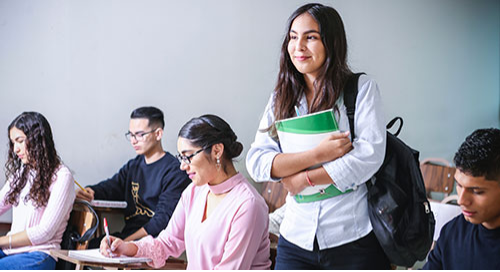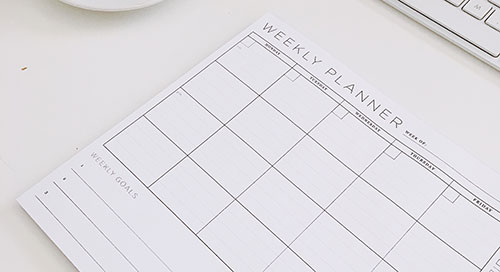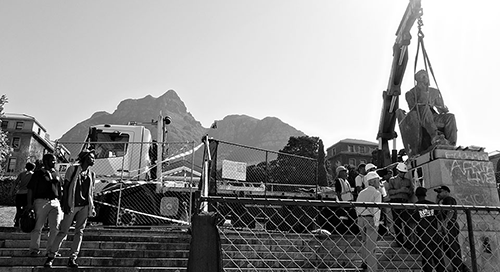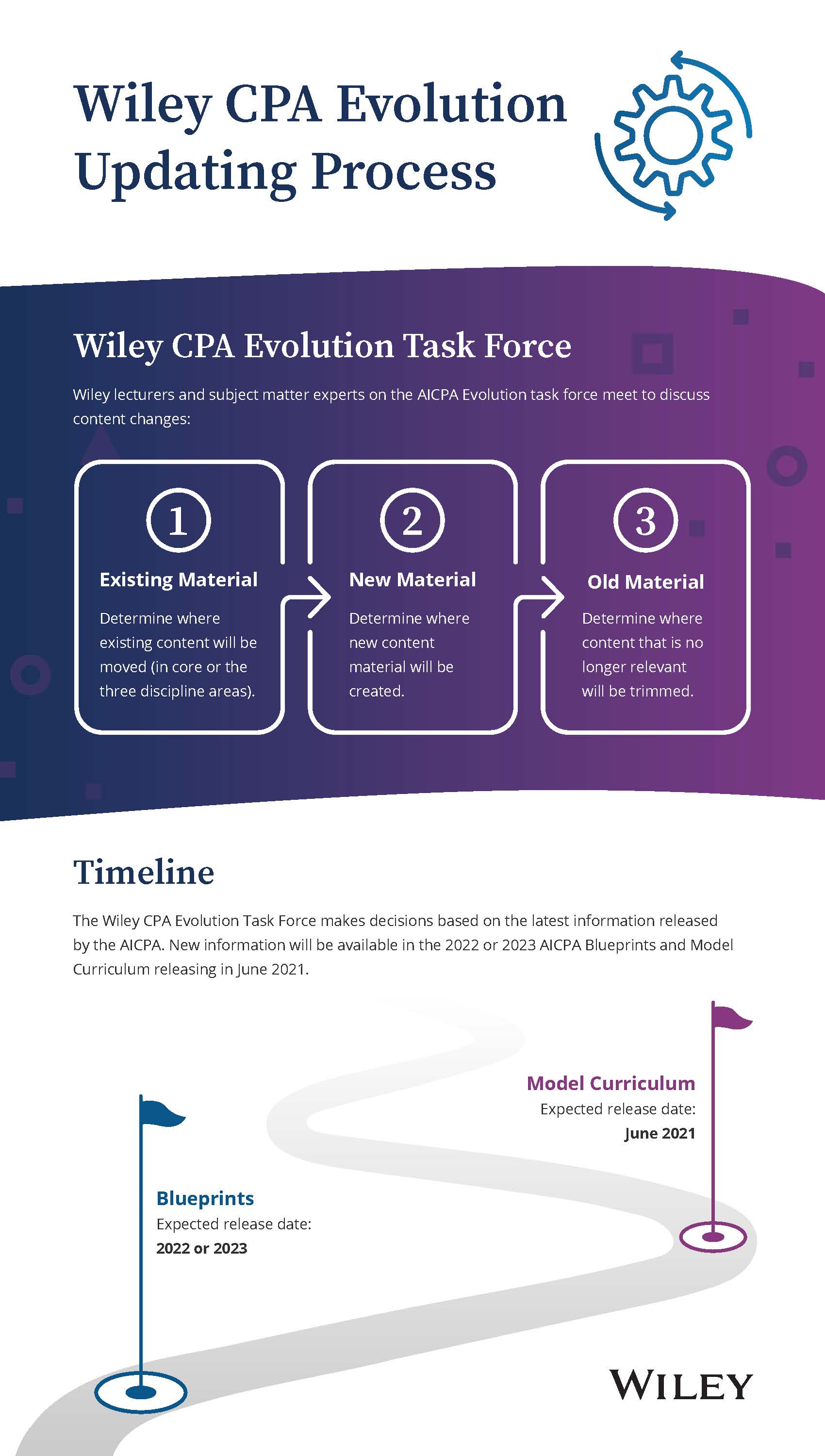4-tips-for-teaching-science-to-non-science-majors
July 27, 2020
I’ve taught physics at Upper St. Clair High School for almost two decades. But it wasn’t until ten years ago that I began to understand the challenges a student faces in the physics classroom if they are, “not good at science.” Based upon negative past experiences, a student may believe that declaration to be a fact. Or perhaps that statement has been supported by data from standardized test scores.
Any way you slice it, teaching science to non-science majors requires a non-traditional approach. Part of the challenge I initially faced was using instructional strategies that I hadn’t considered in my AP Physics or Academic Physics class sections. Once I stepped outside of my comfort zone, it became easier to communicate physics to my Conceptual Physics students. As a result, I’ve incorporated these methods into teaching all of my classes.
Below are the four instructional strategies I’ve used to teach physics to students that traditionally struggle in the sciences.
1. Know Your Audience
The first year I taught Conceptual Physics, I simply transposed the Academic Physics curriculum and tweaked it slightly. I focused on formulas, stressed lots of algebra, and emphasized mostly independent work. Did I play to student strengths in year one of Conceptual Physics? Unfortunately, no.
Most Conceptual Physics students struggle with mathematics and loathe algebra. But those same students understand the nuances of direct and indirect relationships in a common-sense way. Working alone in class most of the time isn’t productive for these students, especially when they struggle with a recurring concept. But those same students thrive during structured collaboration time, and often assist their peers before I’m able to reach them during challenges.
Accept and embrace student differences and flatten the learning curve for teaching a new course. Teachers are more effective when they understand the skill set their students possess on day one of class and use it to their advantage.
2. Check Student Understanding
Class time is extremely valuable for both students and teachers. Solicit student feedback during lecture, and optimize the time spent together. Carve out a small block of time within the first ten minutes to check student understanding. Then speed up, slow down, or stay at the current pace to best meet the needs of your students.
Employ a straightforward check for student understanding. Reference the material previously assigned for that day’s lecture to craft three multiple-choice style questions. Isolate only one topic per question and provide three clear options as possible answers. Budget a total of no more than five minutes to administer, perform, and present the findings of your check for understanding in class.
Real-time data can be collected and shared quickly in either digital or analog format. If you choose the digital path, utilize smartphones, tablets, or laptops along with an electronic polling platform. Plenty of no-cost web-based polling options are available to present, collect, and share out findings.
No electronics? No problem. Write your questions and possible choices on the board and solicit student feedback through a visible inspection. Students select their answer choice by a showing of one, two, or three fingers corresponding to the first, second, or third answers choices. Note the tallies on the board to calculate class percentage correct for each question.
Examine the class percentage correct for each question to guide the pace of the lecture. If less than seventy percent of your students answer the question correctly, then slow down and spend more time on that topic. If more than ninety percent of your students answer the question correctly, then speed up and spend less time on that topic. If the percentage correct falls in between those two thresholds, then keep normal pacing for that topic during the lecture.
3. Encourage Students to Defend Their Position
Consider a slight twist on the traditional true/false assessment item; add an opinion component to it. Pose a statement, written as either true or false, regarding a major topic from class. Prompt students to identify the statement as either correct or incorrect. Then direct them to defend their position. When students must pick a side, their voice is valued and learning sticks.
For example, during the Newton’s Laws Unit in Conceptual Physics, I used to direct students to, “write Newton’s Second Law,” verbatim on a test. Now I rephrase the prompt as “Mr. Petrick argues that pushing a large piano requires less force than pushing a small box if they both move with the same acceleration. Is his statement correct in accordance with Newton’s Second Law? Defend your position.” Use a vivid description to capture your students’ imaginations. Include names of people they know, and students will visualize the scenario.
4. Create Accountability Within Groups
How do you know if your students are ready to move on to a new topic? And how do you meet the needs of the entire class? Each class section has its own personality, and students have a wide array of ability levels. Especially in Conceptual Physics. Some need a slight nudge to understand a topic, some need a lot of support to be successful, and some are always ready to progress onto something new.
Implement an activity at the end of the week to establish student accountability. Break up your class into small subsets of three students each. Hand each group three markers, one sheet of poster size paper, and a roll of masking tape. Prior to class, generate a list of five main concepts emphasized during this week’s class.
Randomly select one topic for each group. Based on class size, topics may repeat for student groups. Task each group with explaining their topic by writing on the poster paper. Groups can choose to create a sketch, write words, identify a formula, or a use a combination of these actions to demonstrate understanding of their topic. Remind the class that each group member must be an active participant. Prompt groups that they will have to present their findings to you.
Circulate through the room and monitor group activity. Each student acquires what they need within the group- support from their peers, a quick review for reinforcement, or an opportunity to lead- during the collaboration. Students share out with their peers and the instructor for accountability.
The teacher has freedom to decide the details of the activity. I usually check in on groups intermittently, moving through the room as they work. Additionally, I let the class know they have about five minutes work time to complete their poster. After that time has elapsed, I meet with each group to have them present to me informally, after they hang the poster on the wall with tape. I collect all the posters at the end of class, noting if any groups didn’t get a chance to present that day.
What strategies do you use to teach a conceptual level course to students? What tips do you have for teaching content outside of students’ comfort zones? I’d love to hear your thoughts. Please leave a comment in the space below, and I will be sure to reply.













